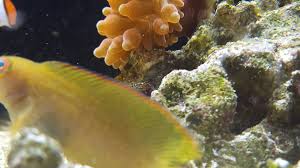The Dragon in Major Festivals and Rituals During the Chinese New Year (Tết Nguyên Đán)

The dragon, one of the most important and auspicious symbols in Chinese culture, plays a significant role in Chinese New Year celebrations, also known as Tết Nguyên Đán in Vietnam. This mythical creature represents strength, power, prosperity, and good fortune. As a central figure in Chinese mythology, the dragon is often depicted during major festivals and rituals to invoke good luck, chase away evil spirits, and celebrate the renewal of the lunar calendar year. Among these festivals, the Chinese New Year stands out as a celebration of new beginnings, family reunions, and traditional customs.
In this article, we will explore the significance of the dragon in Chinese New Year (also referred to as the Spring Festival) and its association with various rituals and celebrations. We will delve into how the dragon appears in dragon dances, lion dances, traditional performances, and other festive customs. Additionally, we will look at how the dragon influences the symbolism of prosperity and luck during the festivities.
The Chinese New Year (Tết Nguyên Đán): A Time of Celebration and Rituals
Chinese New Year is one of the most important cultural events in China and other countries that observe Chinese traditions, including Vietnam, Taiwan, Singapore, and Malaysia. It is celebrated according to the lunar calendar, typically falling between January 21 and February 20, marking the start of a new year and the arrival of spring. The holiday lasts for 15 days, with each day being devoted to different activities and rituals.
The Chinese New Year is not only a time to honor ancestors but also a period for family reunions, paying respects to the gods, and wishing for a prosperous year ahead. The dragon, as a symbol of strength and good fortune, is deeply intertwined with many of these practices and festivals.
The Dragon in Chinese Mythology
In Chinese mythology, the dragon is considered a divine and powerful creature. Unlike the Western dragon, which is often depicted as a malevolent being, the Chinese dragon is a benevolent and auspicious symbol, frequently associated with imperial power, wisdom, fertility, and good luck. It is often regarded as the ruler of the water element, controlling rivers, lakes, and oceans. The dragon is also said to have the ability to bring rain, a crucial element for agriculture and the prosperity of the land.
Historically, the Chinese dragon was associated with the Emperor, who was regarded as the “Son of Heaven” and believed to be a descendant of the dragon. The imperial dragon was often depicted with five claws, as opposed to the four-clawed dragons that represented common people or lower ranks. The dragon’s role as a symbol of imperial authority and cosmic power made it an essential part of Chinese culture, particularly in the context of religious rituals and festivals.
The Dragon Dance: A Key Feature of Chinese New Year Celebrations
One of the most recognizable traditions involving the dragon during Chinese New Year is the dragon dance. This highly energetic and vibrant performance is often seen in parades and public celebrations. The dragon dance is a ceremonial performance in which dancers manipulate a long, colorful dragon figure, made from materials like silk and bamboo, that is carried along the streets. The dragon is typically mounted on poles, with a team of performers controlling its movements, mimicking the flowing motions of the mythical creature.
The dragon dance is believed to bring good luck, chase away evil spirits, and ensure a prosperous and harmonious year. The rhythm of the dance, accompanied by the sound of drums, cymbals, and firecrackers, is intended to create a sense of celebration and joy while invoking the blessings of the dragon. The dance’s majestic movements, which mimic the undulating and spiraling nature of a dragon, are meant to convey the dragon’s strength and ability to drive away bad luck.
Dragon Dance Variations
Depending on the region and local traditions, there are different types of dragon dances. The Southern Dragon Dance is perhaps the most famous, with its long, flowing dragon often spanning 50 to 100 feet. In contrast, the Northern Dragon Dance typically involves a smaller dragon and is performed with more acrobatic and intricate movements.
In some regions, fire dragon dances are also performed, especially in places like Hong Kong and Macau, where the dragon is accompanied by the lighting of firecrackers and the use of fire to ward off evil spirits.
The Lion Dance and Its Connection to the Dragon
The lion dance, another key feature of Chinese New Year celebrations, is often performed in tandem with the dragon dance. The lion in Chinese culture represents courage, power, and good fortune. The lion dance involves performers inside a lion costume, simulating the movements of a lion as they perform acrobatic routines. While the lion is not a direct representation of the dragon, both creatures share similar symbolic meanings, and their dances are often performed to achieve similar goals: to bring good fortune, drive away evil spirits, and ensure the prosperity of the coming year.
In some performances, the lion dance and the dragon dance may appear together, with the lion chasing the dragon or participating in a ritualized competition, further symbolizing the harmonious relationship between these mythical creatures. These dances are usually accompanied by loud drumming, cymbals, and the explosion of firecrackers, creating an energetic atmosphere that is believed to attract good luck and positive energy.
The Role of Firecrackers and the Dragon in Chinese New Year Rituals
During Chinese New Year, firecrackers are an essential part of the celebrations, and their connection to the dragon is particularly important. It is believed that the loud noise from firecrackers will scare away evil spirits and bad luck, ensuring that the new year begins with a clean slate. The sound of firecrackers is also associated with the dragon’s roar, symbolizing the dragon’s power to ward off negative energy and bring prosperity.
In some regions, firecrackers are used during the dragon dance, creating a spectacular display of light and sound that enhances the dragon’s auspicious qualities. Dragon-shaped firecrackers are often lit during the festivities, symbolizing the dragon’s strength and ability to drive away misfortune.
The Dragon as a Symbol of Royalty in Chinese New Year Customs
Throughout Chinese history, the dragon has been deeply associated with imperial power and royalty. During Chinese New Year, various rituals are held to honor the Emperor and the royal family, with the dragon playing a central role in these activities. The dragon throne, for example, was a symbol of the emperor’s supreme power, and it was customary for the Emperor to offer sacrifices to the gods while sitting on the dragon throne during New Year’s rituals.
In modern celebrations, the dragon continues to represent the respect for authority, the imperial legacy, and the traditions of Chinese culture. Many homes and temples display dragon motifs during Chinese New Year, and certain ceremonies are designed to honor the spirit of the dragon and its influence over the family, prosperity, and luck.
The Symbolism of the Dragon in New Year Decorations
In Chinese homes and public spaces, the dragon is often featured in decorations that symbolize good fortune for the year ahead. Dragon motifs appear on red lanterns, couplets (door decorations), posters, and other items. These decorations are often paired with phoenixes, symbolizing harmony between masculine and feminine energies. The dragon and phoenix together represent the balance of yin and yang, which is essential for a prosperous and peaceful year.
Dragon and Red: A Color of Fortune
Red is considered the most auspicious color in Chinese culture, symbolizing good luck, happiness, and prosperity. The dragon, often depicted in red, is said to magnify the positive energy of the color. During the Chinese New Year, homes are adorned with red decorations, and people wear red clothing to invite good fortune and success. The red dragon is believed to bring unlimited opportunities and fortune to those who embrace its presence.
Conclusion
The dragon is a powerful and sacred symbol in Chinese culture, representing strength, good fortune, imperial power, and the ability to ward off evil. During the Chinese New Year (Tết Nguyên Đán), the dragon takes center stage in various rituals, celebrations, and performances. From the dragon dance to the use of firecrackers, the dragon’s presence is felt in every aspect of the holiday, making it a time of joy, renewal, and prosperity. Through its symbolism, the dragon serves as a reminder of the strength, power, and resilience that are needed to overcome challenges and embrace a new beginning in the year ahead.

